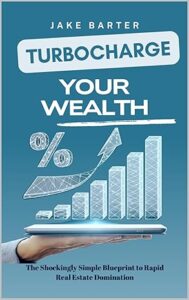Homebuyers in Australia are facing significant financial challenges due to stamp duty taxes imposed by state governments. A recent report by the Housing Industry Association (HIA) highlighted the detrimental impact of stamp duty on property purchases, especially for those who borrow money to cover this upfront tax. The report called for nationwide tax reforms to address the barriers to achieving the country’s housing targets.
The HIA’s findings revealed that higher stamp duty costs for foreign property investors have resulted in over 500,000 fewer new homes being built across the nation in the past decade. This has exacerbated the existing housing shortage and rental crisis, making it more difficult for local homebuyers to enter the property market.
According to HIA senior economist Tom Devitt, homebuyers in states like New South Wales, Victoria, and South Australia could end up paying over $40,000 in additional stamp duty costs if they choose to borrow money for this purpose. These costs can significantly inflate the overall mortgage amount, leading to financial strain for buyers over the loan term.
Stamp duty rates are determined independently by state governments, with Victoria having one of the highest rates in the country. For example, a typical home in Victoria valued at $729,000 would incur a stamp duty payment of $38,810, which, if added to the mortgage, could total over $81,000 over 30 years.
While some buyers opt to borrow money to cover stamp duty costs, experts caution against this practice. Melissa Gielnik, managing director of Smart Lending, advises against borrowing for stamp duty as it can lead to increased mortgage expenses, potential lenders mortgage insurance costs, and limited financial flexibility for buyers.
The impact of stamp duty on foreign investors has also had far-reaching consequences on Australia’s housing market. HIA chief economist Tim Reardon estimated that additional stamp duty charges for foreign investors have prevented the construction of over half a million new homes since 2015. This has contributed to rising property prices and rental costs across the country.
Reardon emphasized that any added costs imposed on international investors are eventually passed on to Australian households in the form of higher property prices or rental rates. The reduced incentives for foreign investment in new residential developments have further strained the housing supply, making it challenging for Australia to meet its housing targets.
Without reforms to stamp duty taxes, particularly for international buyers, Australia may struggle to achieve its goal of constructing 1.2 million new homes by 2029. The decline in foreign investment in the property market underscores the need for policy changes to stimulate housing construction and address affordability issues for prospective homebuyers.
As the housing landscape continues to evolve, policymakers and industry stakeholders must collaborate to implement effective measures that promote housing affordability, stimulate construction activity, and ensure sustainable growth in the real estate sector.
📰 Related Articles
- HIA Report Reveals Stamp Duty Impact on Australian Homebuyers
- Speculation Grows: Will Lower Rates Spark Australian Housing Boom?
- Australian Lenders Slash Rates, Reshaping Housing Market Landscape
- Within Temptation Set for Debut Australian Tour at Knotfest
- Winternationals at Willowbank Raceway: Australian Drag Racing Triumphs
📚Book Titles
- From Junk to Jewels: The Art of Finding Treasure at Flea Markets
- Thrifty Trails: Ingenious Strategies for Satisfying Your Wanderlust on a Shoestring Budget
- Gambling with the Gods: The Shocking Fortune in Forecasting and Mastering the Thrill of Weather Betting!
- Stats to Stakes: Building Your Own AI Betting Models

 Stock Market
Stock Market McDonald’s Monopoly
McDonald’s Monopoly 30 Ways To Pay Off
30 Ways To Pay Off





 Home Loan Handbook
Home Loan Handbook Turbocharge Wealth
Turbocharge Wealth